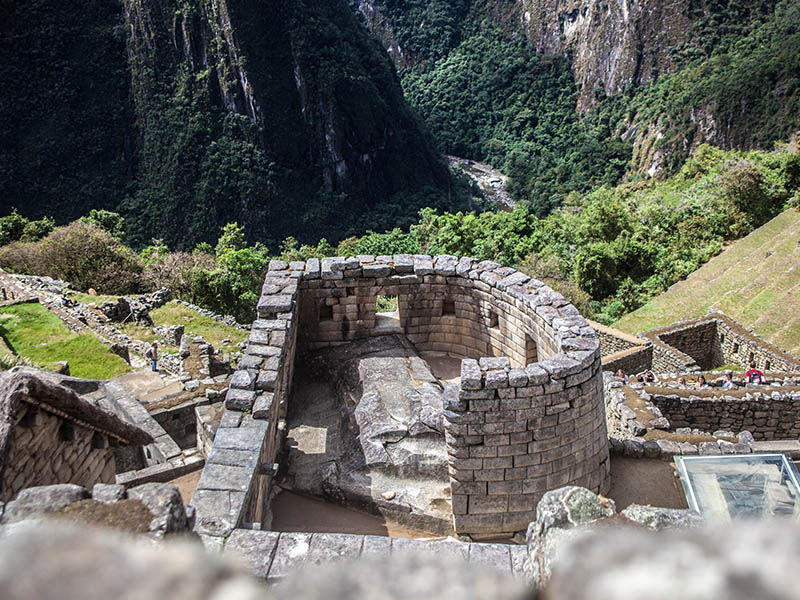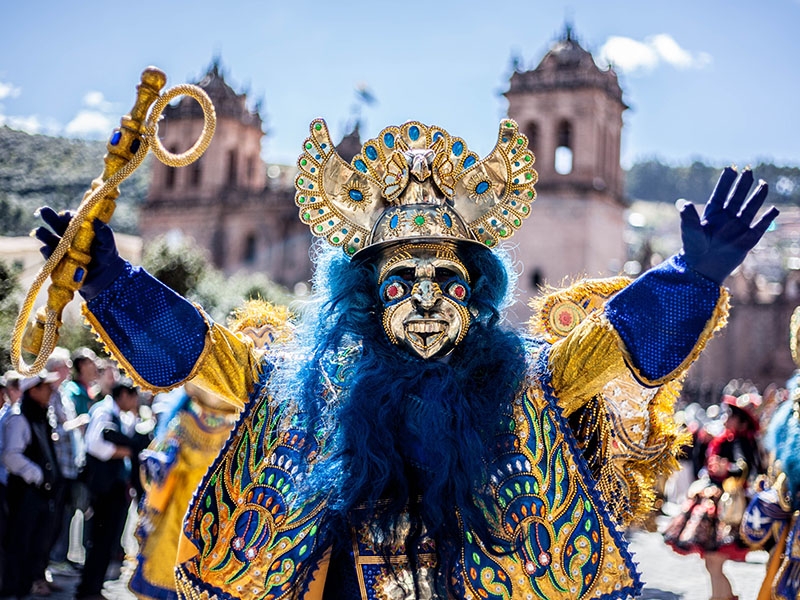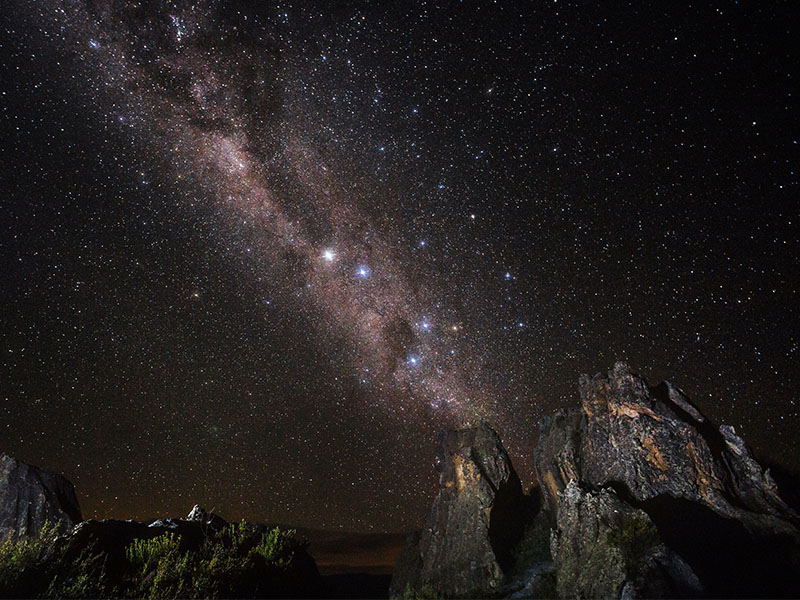
Gazing up at a starry night sky is nothing short of magical. People have long been fascinated with stars, and have attempted to find meaning in what they saw in the sky. The Inca civilization in Peru placed great importance on astronomy. They were the only culture in the world to define constellations of both light and darkness. The Incas not only identified constellations and individual stars, but they also assigned each a purpose . They believed that everything in and around our world was connected.
The Inca flourished in the Andes Mountains in South America from the 12th to 15th centuries. They had a grand empire stretching from present-day Colombia to Chile. Worship was very important to them and they had a complicated religion, closely linked to astronomy . The Inca worshiped various Gods, including Viracocha (the creator), Inti (the sun), and Chuqui Illa, the God of Thunder. They also worshiped huacas, spirits that were believed to inhabit any remarkable phenomenon, including large boulders, trees, streams or waterfalls.
 The Temple of the Sun at Machu Picchu likely served as
a solar observatory and sacred site where high Inca priests performed
rituals.
The Temple of the Sun at Machu Picchu likely served as
a solar observatory and sacred site where high Inca priests performed
rituals.
In general, the sky was very important to the Inca. Both the moon and sun were seen as gods and they built extravagant pillars and temples with great precision so that these “heavenly bodies”, like the sun, would pass over the structures or through windows on specific days, like the summer solstice. The most crucial events for the Inca generally involved the rising and setting of the sun, moon, and stars.
Astronomy was very important for the Inca civilization, partly due to the importance of agriculture. Astronomy was used for agricultural purposes. Cusco for example lies on a radial plan, mimicking the sky and pointing to specific astronomical events on the horizon. Similarly to the ancient Egyptians, this was a horizon-based culture. They built carefully placed pillars on mountains and hills overlooking Cusco, so when the sun rose or set between these pillars, they knew they had to plant at a specific altitude.
 Held during the winter solstice in Cusco,
Inti Raymi
is an annual celebration that pays homage to Inti, the Sun God, so that
he returns to his Inca sons and nourish their crops. It honors a new
cycle of life.
Held during the winter solstice in Cusco,
Inti Raymi
is an annual celebration that pays homage to Inti, the Sun God, so that
he returns to his Inca sons and nourish their crops. It honors a new
cycle of life.
The Inca however not only studied individual stars, but also grouped stars into constellations.
Upon looking at the stars, the Inca noticed many animals and other representations from their day to day lives. They believed that Viracocha had ensured that each animal had a corresponding star and that all living things were protected. Grouping these stars into constellations became very important to the Inca.
Cusco Tours:
The Inca sorted the constellations into two groups. The first and most common groupings of stars were linked in a connect-the-dots manner to create pictures of animals, Gods, heroes and more. These constellations were considered as inanimate. One star grouping known as Pleiades was especially believed to be influential over the well-being of animals. Pleiades was not seen as a greater God to the Inca, but they rather saw it as a huaca to which shamans would make regular sacrifices.
The second type of constellations could only be observed when there were no stars: they were the dark spots or blotches on the Milky Way. These dark blotches were considered as living (animate) animals. The animals were believed to live in the Milky Way, which they thought of as a river. The Inca were one of the few civilizations who were able to locate their constellations without the presence of stars. These dark constellations in turn made up the Inca zodiac.

Here are some popular animal constellations they identified:
The worship of constellations by the Inca culture, and the knowledge of their importance in the agricultural cycle, managed to survive Spanish conquest and the colonial era.
The Inca worship of stars and dark constellations shows us that this culture believed everything around them was connected. The sky had a very special meaning in managing this civilization and impacted daily life.
Even the construction of the famous Machu Picchu site is connected to the stars. Archaeological and ethnological studies now suggest that Machu Picchu was a sacred ceremonial site, an agricultural experimentation center, and an astronomical observatory.

In his book, Animals and Astronomy in the Quechua Universe , author and anthropology professor Gary Urton wrote “The universe of the Quechuas is not composed of a series of discrete phenomena and events, but rather there is a powerful synthetic principle underlying the perception and ordering of objects and events in the physical environment.” (page 126). The snake, for instance, that they observed in the sky has the same cycle as snakes on earth, and both live in harmony, alongside the other celestial animals. This is contrary to traditional western constellations, where various images (i.e. Scorpion, Scale, Fish etc.) have no interaction with each other or events taking place on earth.
Much remains to be uncovered about the importance of constellations to Inca astronomy. Researchers continue to do fieldwork in rural Andean communities where one can still look up at the same constellations that the ancient Incas gazed at centuries before.
The Cusco Planetarium is a family-run planetarium and cultural center located a short drive from the city where you can learn about Inca astronomy. It’s a great place to visit before doing the Inca Trail to Machu Picchu to learn how to pinpoint the Llama and other animal shapes in the spectacular night sky.
Learn what months are best for stargazing in the Andes and arrange a tour to Cusco and Machu Picchu . Contact us for a customized Peru itinerary . Click “ Go Discover ” now.



Email: [email protected]
Sign up to receive our newsletter for great articles, stunning photos, and special deals.